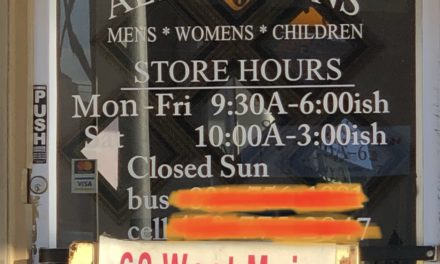
Your CX; Understood, Managed & Optimized
There is clearly a reason I feel like this is a cycle and not a linear process. All of the elements are critical to empowering your very best customer experience and are items that you will constantly be working on and are in constant flux. Very early in the process of focusing on and advancing your customer experience through the various elements, you’ll likely recognize how intertwined they all are.
Discovery is an excellent focused first step if you feel like you don’t know where to begin or where you currently are. Discovery is also an effective restart if you feel like things have just gotten a little out of control or unclear where things are. But in a short amount of time, you’ll likely note that it’s not as much of where you are in the cycle as it is how overall mature is your organization at effectively using the cycle.
While this post focuses on the discovery, and we’ll talk about the various ways in which you use discovery, I think it will be very helpful have in mind how and be reflective as to how mature you think your organization is and your leadership team is specifically on customer experience matters.
To an organization in its complete infancy of this process, discovery looks like that first time you asked for a customer’s feedback and you start the process of collecting data or that first time you paid that intern to sit and count how long it takes a customer to do an activity in your store. These measures, in some shape or form, always need to be happening to ensure that you’re always discovering what your customer is sharing with you. But in a fully mature organization, you need to be discovering through very specific sophisticated means that are more observed behaviors versus customer stated behaviors.
If I may use an overused example that those closest to me are probably tired of hearing. In the extreme infancy of discovery for my lunch buying habits, you could ask me to report each week what I had to eat. There would be valuable insights, it would probably help you quickly get generalized info as to if I’m sandwich, burger, or salad eater and may help you generally make other assessments such as healthy or unhealthy eater. It is an excellent place to start and build from.
A more sophisticated use of discovery about what I eat for lunch would be through accessing my credit card statements, heart rate monitor from the smartwatch on my wrist, monitoring any changes in clothing size purchase, and doctor results from recent visits.
The first one requires much more interaction with the customer that may or may not be a pleasant experience for the customer, and it also introduces a much more subjectivity. For example, sadly my answers might be different as to what I ate for lunch if my wife is with me when I’m filling out the survey. The more sophisticated approach to discovering data is much less customer invasive allows for a quicker gathering, analyzing data and becomes extremely objective as it becomes less about the what was for lunch and moves to the impact of the lunch and opens up many opportunities to address the impact. Each has their place and practical use and exhibit the extremes of the discovery process.
One of the most exciting and encouraging outcomes of discovery is usually confidence. You rarely engage in a discovery activity where you don’t end up learning something you didn’t know or have something reaffirm to you. Either outcome should be extremely empowering and encouraging to you no matter where you are in the process of establishing your customer experience. A few things to keep in mind regarding the discovery experience:
- Discovery is a critical piece of a very long journey and never the destination. I see this more with new companies that are starting out and as they start with discovery they are learning so much stuff that they didn’t know before that they become addicted to the “what can I learn next about this” and they don’t move quickly enough to let what they are discovering mold what needs to be happening for the customer. The most dangerous part of continually living in the discovery phase is refusing the clear signs that now that you know something you need to do something about it. Some leaders become disinterested when you slow the learning of new information and are bored with more and more discovery efforts ONLY confirming prior learning. This discrediting from weaker leadership begins to disengage and discredit the clear direction coming from the discovery and either disengage from the customer experience cycle altogether or throw good dollars after bad on less effective discovery efforts only trying to learn something new. You must act when you understand what you discovered.
- Discovery has a wide range of exercises that can be effective. It is important to stay extremely tuned in to the efforts that are most effective for the current situation at the company. With discovery efforts, be wary of “one size fits all” as it is likely what will work very best for you is not the same as what will work best for others.
- Never get bored with discovery efforts. Be extremely leery of any thoughts around “OK we discovered enough it’s time to move to the next phase and we don’t need to discover anymore”. You constantly need to be open to what you were discovering organically and constantly asking and discovering from your customers
No matter where you are on the spectrum of managing your customers experience, I invite you to reflect deeply on 1) what you are doing to actively discover your employees and customers feel and sharing about your customer experience and 2) what have you established to ensure that you’re recognizing new information that is being discovered organically or through the monitoring of the behavior of your customers.






What is being talked about…